Do I Really Need a Permit to Replace My Drain Field? Find Out Now
 |
| Septic Tank Drain Field Digging |
Are you considering a drain field replacement for your septic system? Before you begin, it's important to understand whether you need a permit to replace your drain field. In most areas, there are septic tank regulations, septic system rules, and sewage treatment laws that require permits or approvals for any changes to the system.
The permit to replace drain field may be referred to as planning permission, building consent, or zoning permit, depending on your location. It's important to check with your local government or septic system authority to determine the specific requirements in your area. Building regulations approval and construction regulations consent may also be needed to ensure compliance with local codes and standards.
In addition to the permit or approval, it's important to consider waste management and disposal. When replacing a septic leach field or drain field, you may need to properly dispose of the old system's components or excavated soil. If your system discharges to surface water or releases effluent into open water, additional regulations and permitting may be required. Consulting with a licensed septic system professional can help ensure a successful and compliant septic tank replacement or upgrade.
Understanding Drain Fields and Permits
A septic system’s drain field, also known as a leach field, is a crucial part of the sewage treatment process. It's the final stage of treatment in which the wastewater is released into the soil for absorption and filtration, ensuring that the water is clean before it returns to the environment.
If you're planning to replace your drain field, you need to be aware of the septic tank regulations, septic system rules, and sewage treatment laws in your area. Before you begin any work, you must have the necessary permits and approvals to avoid any legal issues.
When it comes to getting a permit to replace your drain field, you may need to obtain planning permission, building consent, zoning permit, or other forms of regulatory approval. The process varies depending on where you live and the regulations that apply to your septic system. You should also check with your local waste management authority to determine the rules and requirements for sewage treatment in your area.
Once you have the necessary permits and approvals, you can start the process of drain field replacement or septic system upgrade. The replacement process involves digging up the old drain field and installing a new one. In some cases, it may be possible to repair the old drain field, but in others, a complete replacement may be necessary.
During the installation process, it's essential to ensure that all the building regulations approval, building code acceptance, and construction regulations consent are met. You must also be mindful of the septic tank discharges, septic system outflow, sewage tank releases, and effluent to surface water regulations, as you work to avoid any negative impact on the environment and the community.
A well-designed and maintained septic tank system with an appropriately sized drainage field can be an effective and eco-friendly method of sewage treatment. With the correct permits, septic system upgrade, septic tank change, or drainage field upgrade can be a valuable investment in your property, improving the efficiency and effectiveness of your waste management system while complying with all relevant sewage treatment laws.
When is a Permit Required for a Drain Field Replacement?
Replacing a drain field is a complex process and requires a proper understanding of septic system rules and sewage treatment laws established by local, state, and federal agencies. Before engaging in any activity related to septic system replacement, it is important to determine whether you need a permit to replace your drain field.
Planning permission, building consent, and zoning permit requirements vary depending on the area you live in, but they generally come into effect when you are replacing your drain field because it is listed under the category of waste management or waste disposal. Make sure to contact your local environmental agency or check their website to determine what specific regulations you need to comply with.
Building regulations approval, building code acceptance, and construction regulations consent may also apply when replacing your drain field. To ensure that you do not face any legal consequences, it is essential to abide by the relevant regulations and procedures established by your local governing body.
A permit to replace a drain field should be issued based on several factors and typically involves meeting minimum standards for septic tank discharges, septic system outflow, and sewage tank releases to ensure the health and safety of the community and the proper functioning of the septic system.
Septic tank replacement, septic system upgrade, and septic tank change also fall under the same jurisdiction as drain field replacements, and therefore, it is necessary to comply with similar regulations and obtain the required permits.
In cases where you release your effluent to surface water or open water, additional regulations may apply. You may need to seek approval from the local sewage facility, waste water processing plant, or waste management authorities regarding your discharge.
To summarize, when replacing a drain field, it is critical to understand the septic tank regulations in your area and to obtain all required permits and approvals. By doing so, you can ensure that your drainage field upgrade, leach field improvement, or drain field advancement complies with the relevant laws and that you avoid any unnecessary penalties.
Factors That Determine If You Need a Permit
If you plan on replacing your septic tank drain field, you may be wondering if you need a permit for the work. The answer is that it depends on several factors, including your location, the type of system you're installing, and the specific regulations in place that govern septic systems and waste management. Let's take a closer look at some of the key factors that determine if you need a permit to replace your drain field.
1. Regulations and building codes in your area
The regulations and building codes in your specific area will have a significant impact on whether you need a permit to replace your drain field. Your local government may require you to obtain a sewage treatment plant or building regulations approval, a zoning permit, or other types of planning permission or building consent before you can begin work. You should check with your local authorities to understand any specific rules or permits that may apply in your area.
2. Type of system being installed
The type of septic system you plan to install will also come into play when determining if you need a permit. Certain types of systems, such as those that discharge to surface water, may have more stringent regulations surrounding them and require additional permits and approvals. Additionally, if you plan on upgrading or changing your septic tank setup, you may need to obtain a license for septic field change or septic field replacement approval.
3. Waste management laws
Finally, waste management laws in your area will also be a factor in determining if you need a permit to replace your drain field. Your local regulations may govern septic tank discharges or septic system outflow, and you may need to obtain construction regulations consent or building code acceptance before you can proceed with your project. It's also worth noting that many waste management systems may require you to dispose of your waste through specific channels, such as a sewage facility or waste water processing plant.
In conclusion, whether or not you need a permit to replace your drain field will depend on a variety of factors, including your location, the type of system you're installing, and the specific regulations in place that govern septic systems and waste management. It's important to do your research and ensure that you follow all applicable rules and regulations to avoid any potential issues down the line.
How to Obtain a Permit for a Drain Field Replacement
Before replacing a drain field, it's important to understand the relevant regulations and laws governing septic systems in your area. Failing to obtain the necessary permits and approvals can result in costly fines and legal issues. Here, I'll outline the steps to obtain a permit for a drain field replacement, as well as some important considerations to keep in mind.
Research the applicable septic system rules and regulations in your area. This may involve contacting your local health department or environmental agency, reviewing building codes and zoning laws, or consulting with a septic system professional. Some areas may require planning permission or building consent for a drain field replacement, while others may have specific requirements around the type of system used or the discharge of effluent into surface water.
Contact the appropriate regulatory agency to begin the permit application process. This may involve filling out an application form, providing documentation and plans for the proposed drain field replacement, and paying a fee. In some cases, you may need to meet with a representative from the agency to discuss your plans and answer any questions they may have.
Wait for the permit to be approved before beginning any construction or installation work. This may take several weeks or even months, depending on the complexity of the project and the workload of the regulatory agency.
Ensure that the septic tank replacement or upgrade is carried out according to the approved plans and within the timeframe specified by the permit. Failure to do so may result in the permit being revoked and fines being imposed.
It's worth noting that the specific requirements for obtaining a permit to replace a drain field can vary widely depending on your location and the type of septic system you have. It's important to thoroughly research the applicable rules and regulations and seek the guidance of a professional if needed. Additionally, proper waste management and disposal practices should be followed at all times to ensure the health and safety of your community and the environment.
The Consequences of Not Getting a Permit
Before replacing a drain field, it is essential to understand the legal requirements involved. Septic tank regulations, septic system rules, and sewage treatment laws vary from state to state and county to county. In most cases, a permit is required to replace a drain field. This permit is also known as planning permission, building consent, zoning permit, or building regulations approval.
However, some homeowners may feel tempted to skip the permit process, but this decision can have severe consequences. Not obtaining a permit or license for septic field change can result in hefty fines, legal issues, and even forced septic system restoration. Building code acceptance, construction regulations consent, and septic field replacement approval may seem like nuisances, but they are in place to protect public health and safety.
Moreover, failing to abide by the legal requirements can lead to trouble when it is time to sell the property. Selling a home without proper documentation of septic tank replacement or septic system upgrade can decrease the value of the property and make it more challenging to sell. Buyers are very wary of any waste management-related problems and legal issues.
Additionally, replacing a drain field without obtaining the necessary permit can also result in environmental damage. Septic tank discharges, septic system outflow, and sewage tank releases must follow strict guidelines to prevent environmental harm. Effluent to surface water, discharge to surface water, or release into open water without proper sewage treatment plant or wastewater processing plant can cause irreparable harm to the ecosystem.
In conclusion, it is always best to obtain the necessary permit or license for any septic tank replacement, septic system upgrade, or drainage field improvement. The consequences of not obtaining a permit are not worth the risk. Building regulations approval, construction regulations consent, and septic field replacement approval are in place to protect homeowners, public health, and the environment.
How Much Does a Permit for Drain Field Replacement Cost?
Replacing a drain field is a major undertaking and requires the necessary permits from the local governing authorities. Knowing the permit cost for septic leach field replacement will give homeowners an idea of their project's total expenses.
The cost of a permit for drain field replacement varies depending on the local regulations and requirements. Typically, the permit cost ranges from $50 to $500, depending on your location.
Most local authorities require a soil analysis before issuing a permit for septic leach field replacement. In addition, some areas may require building consent, planning permission, and zoning permits, which can affect the permit cost.
It's also essential to note that the permit cost isn't the only expense involved in replacing a drain field. Contractors must follow septic tank regulations, septic system rules, and sewage treatment laws that come with additional costs.
In addition to the permit cost, homeowners should also consider other expenses such as the cost of septic tank replacement, septic system upgrade, and waste management during the replacement process.
Moreover, homeowners must ensure that their septic tank discharges meet the applicable sewage tank releases and septic system outflow standards on their property. If not, they may have to upgrade their sewage treatment plant or wastewater processing plant.
Before replacing a drain field, homeowners must check with their local authorities to obtain the necessary building regulations approval, building code acceptance, construction regulations consent, or septic field replacement approval.
In conclusion, the permit cost for septic leach field replacement varies widely based on the location's local regulations, the type of permit required, and additional expenses involved. It's crucial for homeowners to research these factors before starting the project to stay within their budget and comply with the necessary rules.
Alternative Options for Drain Field Replacement Without a Permit
In certain cases, it may be possible to replace a drain field without a permit. However, local septic tank regulations, septic system rules, and sewage treatment laws vary depending on where you live. Therefore, it's important to check specific guidance or rules related to your location before you begin the process.
Here are some alternative options to replacing a drain field without requiring a permit:
Septic Tank System Upgrade
If the current septic tank is old or inadequate to deal with the size of your household, upgrading to a larger septic tank can help to extend the lifespan of your drain field. It's generally not necessary to obtain a permit for septic tank replacement, although this may vary depending on your local area's building regulations approval.
Drainage Field Improvement
If the problem with your drain field lies in drainage issues, rather than the condition of the pipes, it might be worth considering drainage field improvements. Simple changes like leveling the ground or removing obstructive roots can make a significant difference in drainage quality. This can improve the performance of the drain field and reduce the likelihood of issues arising.
Waste Management
Proper management of waste is key in reducing the likelihood of issues with a septic system. Waste disposal should be managed, and garbage managed to prevent blockages and overflows which may cause issues with the septic tank discharges leading to problems with sewage tank releases.
Sewage Treatment Plant
If you require an upgrade or new installation, consider erecting sewage treatment plants or waste water processing plants rather than discharging the effluent to surface water. This way, you can avoid or minimize any discharge into open water and enhance the quality of sewage established without requiring a permit.
Building Regulations Approval
It's crucial to comply with the relevant building regulations to ensure that your drain field is functioning correctly and remains problem-free. Getting building regulations approval, construction regulations consent or building code acceptance is required in many areas before the drain field or septic system upgrade can be started.
Overall, it's possible to replace a drain field without a permit by following some of the alternative options mentioned above depending on your local area's zoning permit, planning permission and septic field replacement approvals.
Tips for a Successful Drain Field Replacement
Replacing a drain field is a costly and time-consuming process, but sometimes it's inevitable. It's essential to follow your local septic system rules and regulations during the drain field replacement process. You must obtain zoning permits or planning permissions before beginning construction. Building regulations approval and a permit to replace the drain field are also typically required.
Here are some tips on how to ensure a successful drain field replacement:
Hire licensed, experienced professionals - Drain field replacement is a complicated process that requires expertise. You should look for professionals who have a License for septic field change, Septic field replacement approval, and have experience in septic tank replacement, septic system upgrade, septic tank change, Drainage field upgrade, Leach field improvement, Drain field advancement or related areas.
Choose the right location - Choose the location of the new drain field carefully. It's essential to consider factors such as the proximity to water bodies, tank discharges, sewage system outflow, and building codes acceptance.
Proper waste management - During the drain field replacement, you must ensure minimal waste exposure, and proper garbage management as it may contaminate the soil, water, or air.
Follow regulations - The discharge of domestic waste and septic tank discharges is heavily regulated by local sewage treatment laws and zoning permits. A failure to comply could result in expensive fines.
Proper installation - A proper installation of the new drain field is critical for long-term sustainability. A poorly designed or installed drain field may result in the release of harmful bacteria and pollutants into surface water.
Maintenance - Regular maintenance of your septic tank system, Sewage tank system, and drainage field upgrade is necessary to ensure it functions correctly. This maintenance includes pumping the tank, checking for clogs, and scheduling regular inspections from licensed professionals.
Ensure that your new drain field follows the sewage facility rules and regulations. Proper planning, execution, and adherence to local regulations will make a successful drain field replacement that keeps your home's wastewater treatment system in excellent working condition.
Frequently Asked Questions About Drain Field Permits
As a homeowner, you might be wondering if you need a permit to replace your drain field. In short, the answer is usually yes. But let's dive deeper into this topic and answer some common questions related to septic system rules and regulations.
What kind of permit do I need to replace my drain field?
The type of permit you need will depend on where you live and the specific regulations in your area. Some common types of permits include planning permission, building consent, zoning permits, and septic field replacement approval. You will likely need to submit detailed plans of your proposed drain field replacement and obtain the necessary building regulations approval or construction regulations consent.
Why do I need a permit to replace my drain field?
Septic tank regulations and sewage treatment laws help ensure that waste management and wastewater processing are carried out safely and effectively. Obtaining a permit ensures that your drain field replacement meets building code acceptance and safety standards, and prevents environmental damage from septic system outflow, waste water processing plant effluent, and sewage tank releases. Additionally, a permit may be required for legal reasons, such as when selling your property or obtaining financing.
What factors can affect the cost of a drain field replacement permit?
Several factors can influence the cost of obtaining a permit for septic leach field replacement or other types of drainage renewal. These include the complexity of your drain field replacement plans, the type of permit you need, the location of your property, and the regulations in your area. Some areas may also charge a fee for the permit application and review process.
Are there any alternatives to getting a permit for drain field replacement?
In most cases, it is not advisable to replace your septic field without obtaining the proper permit. Attempting to do so may result in fines, legal consequences, or damage to your property and the environment. However, you may be able to apply for a waiver or exemption from certain permit requirements if you can demonstrate that your drain field replacement plans meet specific criteria.
In conclusion, obtaining a permit for drain field replacement or septic tank replacement may seem like a hassle, but it is an essential part of ensuring that your waste management system operates safely and effectively. By researching septic system rules and regulations in your area and working with a qualified professional, you can obtain the necessary permits and upgrade your septic setup with confidence.
How to Determine If Your Drain Field Needs Replacement or Repair
Maintaining a healthy and operational septic system is crucial to ensure the protection of public health and the environment. Therefore, it is important that you become familiar with septic tank regulations and septic system rules within your jurisdiction.
If you're experiencing problems with your septic system, particularly with your drain field, it could be a sign that you need drain field replacement, septic leach field replacement, or drainage renewal. But how can you be sure?
Here are several signs that may indicate it's time to replace or repair your drain field:
Slow draining sinks and toilets - If your sinks and toilets don't seem to be draining water as quickly as they used to, it could be a sign that your drain field is clogged or has failed.
Unpleasant odors - Strong, foul odors coming from your drain field or septic tank could be a sign of a malfunction. The problem could be a clogged filter, or it might be a sign that your tank is beyond repair.
Puddles and wet spots - If there are wet spots or pools of water on your yard or near your drain field, it's a sign that your drain field is not processing wastewater as it should. This is a tell-tale sign of a failing drain field.
Lush, green grass - You might think that it's a good sign if your grass around your drain field is looking lush and green, but it could mean that your drain field is working overtime to process the wastewater from your household.
If you are experiencing any of these signs, you may require a septic tank replacement, a septic system upgrade, or even a septic tank change. However, before you undertake any septic field replacement or improvement project, you must obtain the necessary permits and approvals, such as planning permission, building consent, or zoning permit.
You will need to comply with building regulations approval, construction regulations consent, or building code acceptance, and ensure that your septic tank discharges, septic system outflow, and sewage tank releases comply with local sewage treatment laws and waste management regulations.
Ensure that the septic system you install or upgrade can handle the effluent to surface water, and that it doesn't contribute to the discharge into open water. Also note, that the septic set-up must comply with the waste water processing plant or sewage facility regulations.
In conclusion, understanding the signs that your drain field needs replacement or repair can help you to take corrective measures and avoid further damage. It is critical that you seek professional advice and obtain the necessary licenses and permits before undertaking any septic field replacement project.
Conclusion:
In conclusion, before replacing a drain field, it is important to understand the regulations and laws governing septic systems in your area. This includes obtaining any necessary permits and approvals from local authorities, such as planning permission or a zoning permit. Building regulations approval may also be needed, depending on the extent of the replacement.
A septic tank replacement or upgrade may require additional waste management measures to be put in place, such as a sewage treatment plant or waste water processing plant, in order to comply with local sewage treatment laws. Discharge to surface water or release into open water may also be regulated, so it is important to know the rules and guidelines regarding effluent to surface water.
If you are considering a drain field replacement, it is important to note that septic tank discharges or sewage tank releases from your septic system on the new drain field may be closely monitored, in order to prevent contamination of the surrounding environment. Therefore, it is essential to comply with all applicable septic system rules and regulations, to ensure proper sewage treatment and waste disposal.
Overall, whether you are replacing a septic field, upgrading your septic tank system, or improving your drainage field, it is vital to seek out the appropriate permits, licenses, and approvals in advance. By following the appropriate building code acceptance and construction regulations consent, you can ensure that your new septic system meets all necessary requirements, for optimal performance and safety.
Research and Fact Checked:
https://www.epa.gov/septic/septic-systems-reports-regulations-guidance-and-manuals
https://www.epa.gov/septic/how-septic-systems-work
.png)
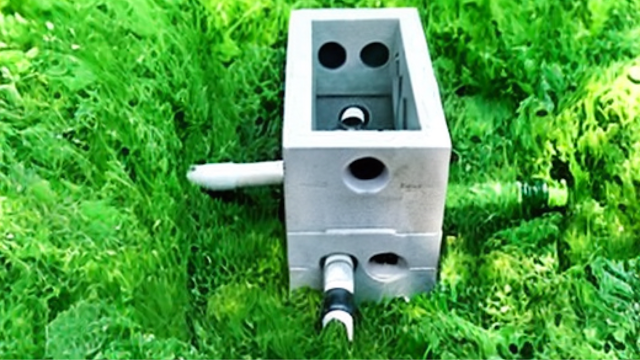

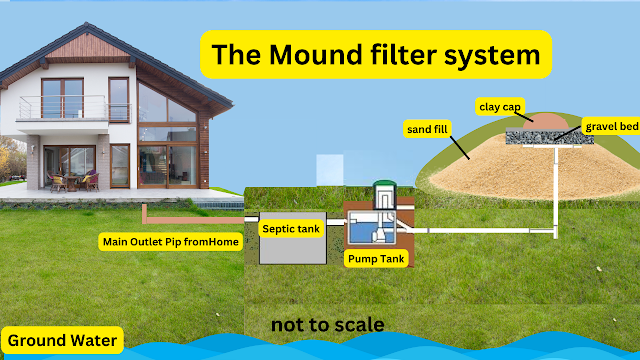
.png)
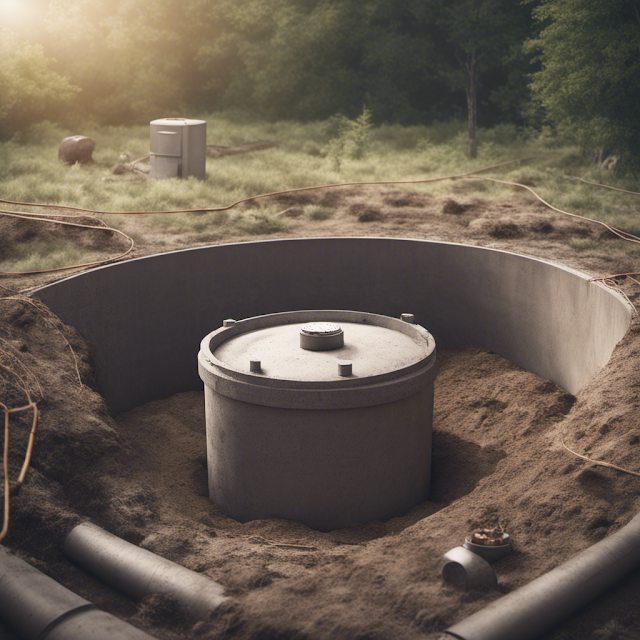
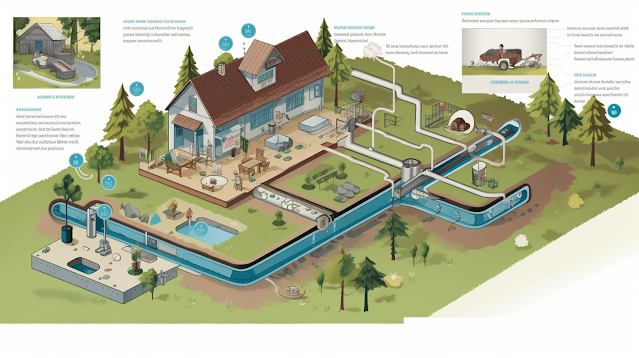
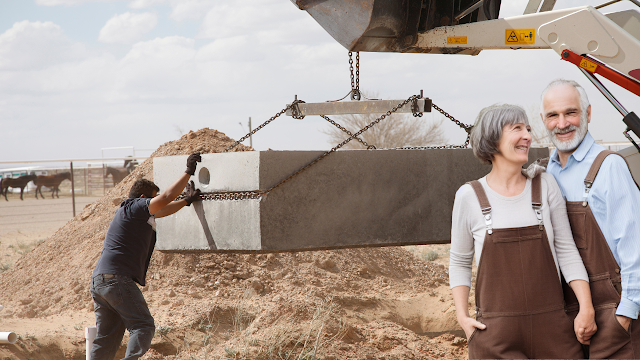


Comments
Post a Comment